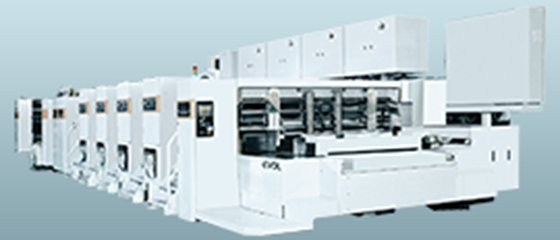The world’s first!
A Next-Generation ERP to Realize the Roads of Tomorrow in Singapore
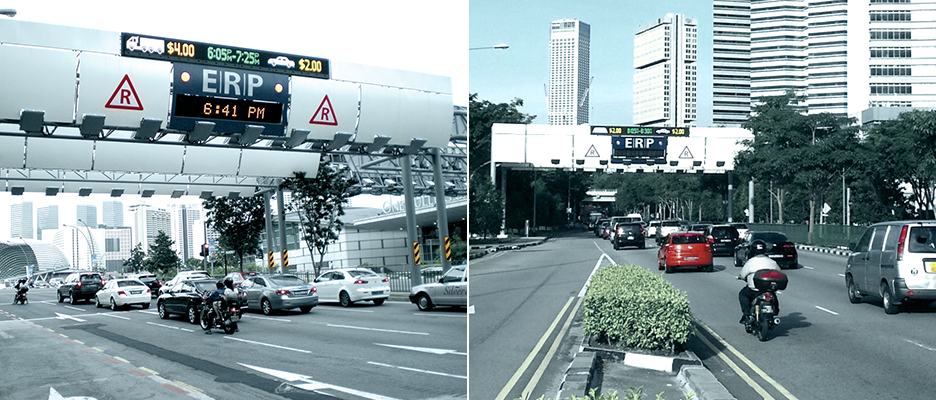
How have the ITS & ERP systems been innovated to reduce traffic congestion?
Automobiles remain an essential means of transportation in daily life. With ongoing economic development, the numbers of automobiles continue to sharply grow. As more cars travel the roads, traffic congestion paralyzes pedestrian flows and physical distribution in many urban areas around the world. The traffic accidents caused by congestion and the economic losses from distribution delays have become serious social problems.
Planners and engineers from many industries and fields have been making various efforts to ease or reduce traffic congestion for more than 50 years. ITS and ERP systems have emerged as one of set of solutions enabled by IT.
- Configuration diagram of the next-generation ERP system
- A system to solve the problems associated with road accidents, traffic congestion, and environmental degradation by exchanging information among people, roads, and automobiles using information technology (IT).
- ERP (Electronic Road Pricing System)
- An Intelligent Transport System (ITS) to collect toll road fees automatically. ETC, the Japanese version of the system, is widely used throughout the country.
Mitsubishi Heavy Industries Machinery Systems (MHI-MS) delivered the world’s first ERP in Singapore in 1998. At present, ITS road facilities cover over 164 km of expressways and tunnels around the urban core of the city.
Highlights!
The world’s first ERP was introduced as a tool for relieving traffic congestion caused by space constraints (limited land available for road infrastructure)!
Before moving on to the main "next-generation ERP" theme, let’s take a step back to see “why Singapore has the world’s most advanced road traffic systems.”
The ERP system originated from a Road Pricing System (a sticker system), the first system of its type in the world, introduced in Singapore to reduce traffic congestion back in 1975. Though Singapore was far less congested than big cities like London or Tokyo at the time, the fast-growing economy depended on automobiles. Congestion levels were certain to worsen over time.
Twelve percent of the physical area of Singapore, a city with limited available land, is already occupied by roads. With no room left for the roads to expand, the traffic congestion in the city must be mitigated by other means.
History of congestion charging (Road User Charging System) in Singapore
The road user charging system was first operated by humans. An attendant in a toll station visually
checked sticker-type passes on the front windshields of vehicles. The stickers were sold for vehicles that
travelled in restricted areas in the city center (Note).
Singapore had the foresight to introduce the world’s first government-backed road pricing system.
As time passed, however, traffic volume increased near the points where the sticker passes were sold, creating a new social problem. Singapore responded by introducing a full-fledged Electronic Road Charging System (ERP) as a national project, with help from MHI-MS and two other companies. The world’s first ERP of DSRC system began operating in 1998. The infrastructure has remained operational in the two decades since.
In March 2014, the Singapore Government announced the introduction of an advanced autonomous Electronic Road Charging System supported by a positioning satellite. To fill an order placed in 2016, MHI-MS is preparing to introduce a next-generation ERP system driven by a core satellite positioning technology that identifies vehicle positions and provides time information necessary for the charging process.
- Manual Road Pricing System: a system to reduce traffic congestion by charging vehicles that enter into the city center. The system began operating in 1975.
From a physical gantry (charging gate) to a virtual gantry Difference between the conventional ERP and next-generation ERP
What has evolved in the transition from the conventional ERP to the next-generation ERP?
The big difference is the virtual gantry. The roadside gantry (charging gate) in the conventional ERP system collects fees by reading information from on-board units installed in passing vehicles, one by one. This is the same process taking place in the ETC in Japan.
The next-generation ERP system collects fees by designating a charging location, or virtual gantry, on a digital map. The positioning information of passing vehicles is monitored over the GNSS wide area communication network (Note) without relying on physical gantries.
In this system, the on-board unit in the vehicle is automatically charged a fee when the vehicle passes the virtual gantry. The cost for construction is cut to almost zero, as no land needs to be acquired for physical infrastructure.
- The global positioning system to determine vehicle positions by satellite (four positioning satellites), and the ground-based control station.
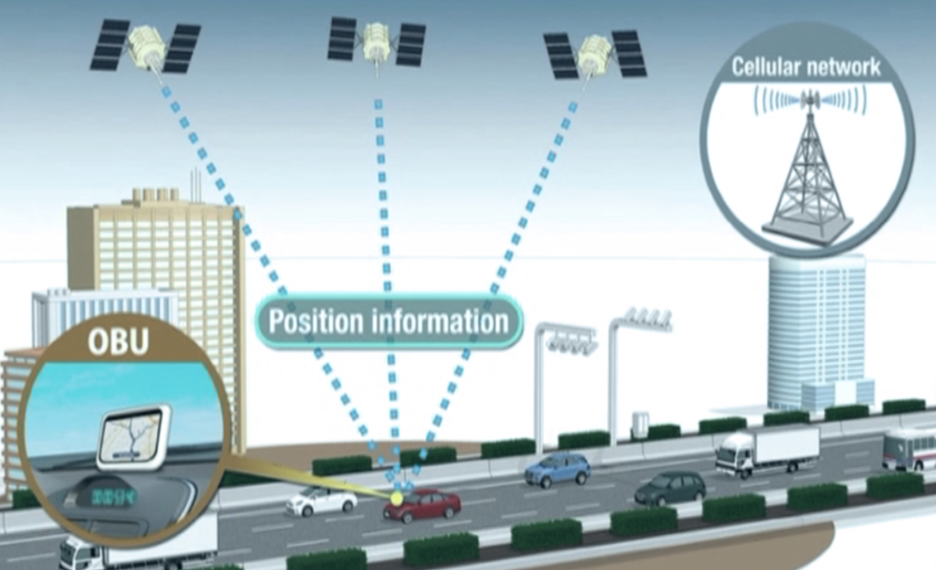
The digital innovations enabled by ICT surpass those possible from a charging system.
Several advantages not possible from the conventional ERP will come when the high-performance communication environment is realized.
Advantage1 : Flexible traffic control
Travel information for each vehicle (position, travel distance, vehicle type, etc.) can be accurately determined in real-time, enabling detailed charging based on various charging point changes and travel distance units. And traffic bottlenecks and accidents can be quickly understood by grasping patterns of traffic flow, which helps traffic planning.
When traffic in a certain area becomes congested, for example, the system immediately sends drivers information on alternate routes in order to avoid the congestion, and adjusts the fees in real-time by temporarily deducting charges for the alternate routes. Traffic is optimized and congestion is reduced.
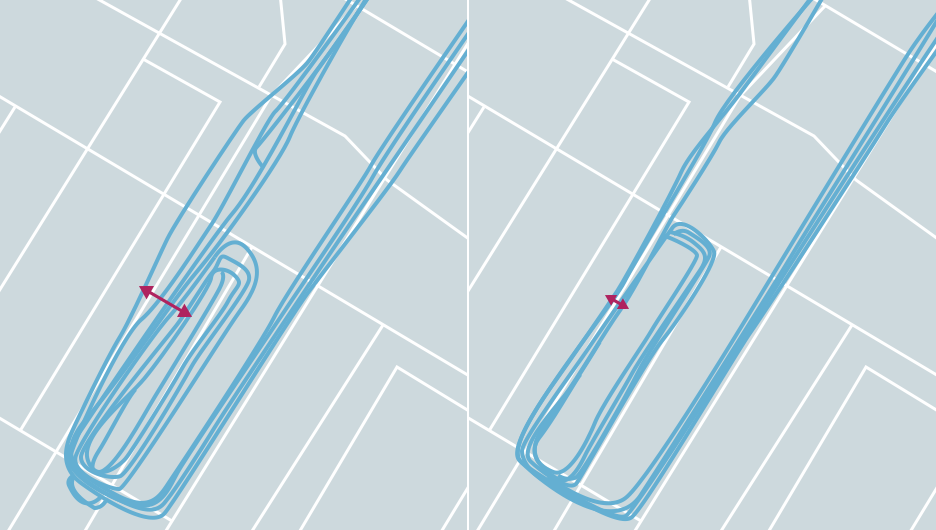
Advantage2 : Diversified information service
By collecting all kinds of data on the movement of people and vehicles, weather information, and the like, the system can provide useful information to drivers in real-time. This capability widens scope of services that can be developed, as well as disaster prevention measures and smart community applications.
If a driver loses consciousness in a car accident, the driver’s vital signs and the details of the accident are automatically sent to the call center to enable immediate emergency action.
As seen above, the introduction of the next-generation ERP will realize various advantages not only for traffic infrastructure, but also for people’s daily lives.
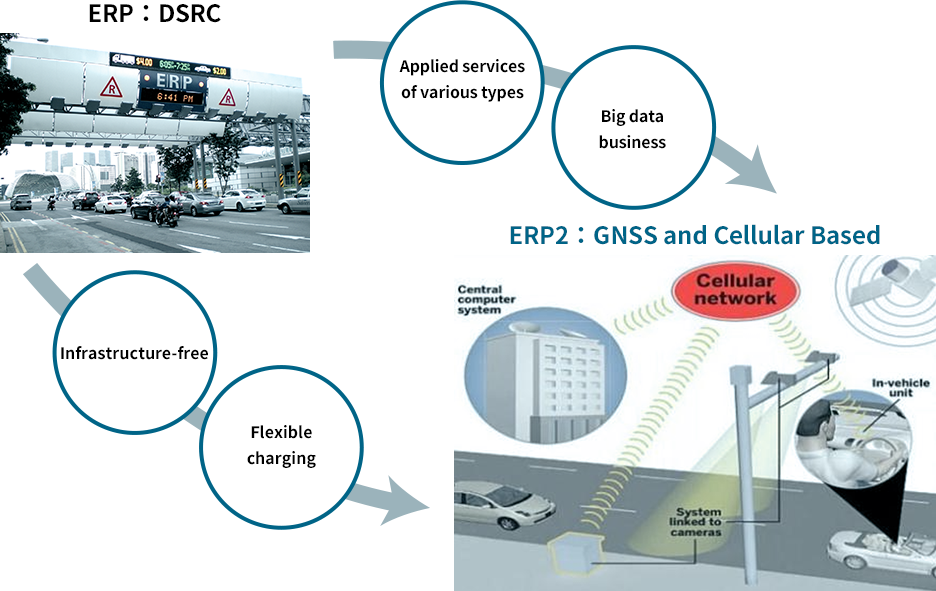
Aiming to realize a next-generation ERP using the most advanced communication technology!
Though it aims to take the global lead with innovative solutions in car-oriented societies, the next-generation ERP still has many challenges to overcome.
The technology to accurately determine a position of a vehicle, wherever it may be, is an especially high technical hurdle to overcome. You may have had the experience of setting a travel destination into Google maps and then moving along with the guidance. If you have, you may have seen the destination point jump around on the map, repositioning itself for no apparent reason.

Overcome today’s poor communication environment and charge the correct fees
The jungle of skyscrapers in Singapore’s urban core is just one of many factors that destabilize the communication environment of the city. Spaces and structures such as canyons of skyscrapers, tunnels, and the areas under viaducts also interfere with radio transmissions. A satellite positioning system based on GPS alone is prone to error in such spaces.
If no accurate information can be provided, or the wrong fees are charged, the system will cause significant problems and ultimately prove useless as a social infrastructure.
To solve this challenge, MHI-MS improved the accuracy of the GPS-based vehicle-positioning system by adopting both positioning technologies and multiple communication technologies such as next-generation on-board wireless telecommunication and cellular networks. And in places where the satellite signal is weak, we overcome the shortfall using an autonomous navigation technology that anticipates vehicle movements by integrating the GPS vehicle-positioning results.
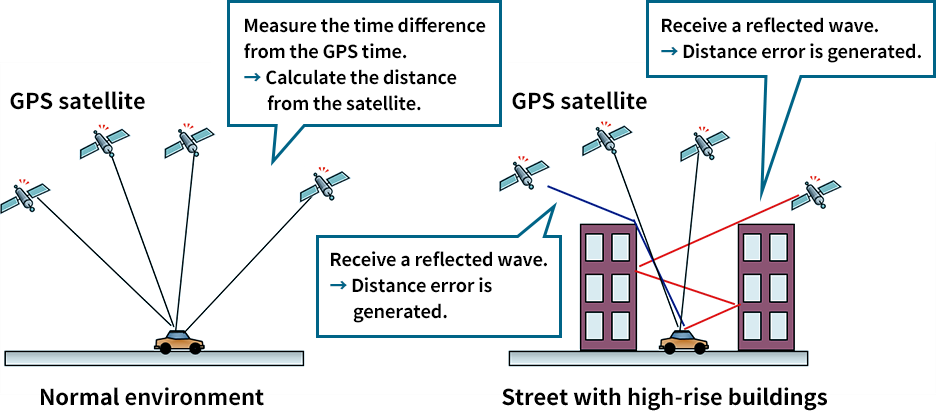
The next-generation ERP will go into full-scale operation!
Another big hurdle is security. As mentioned earlier, the next-generation ERP system must reliably protect National Security by providing a wide and abundant range of information to support Vital Traffic Infrastructure in the event of a cyberattack by malicious persons or hacker groups.
Existing technologies also make it possible to fraudulently alter data such as travel distances. We are responding by performing demonstration experiments for various systems and components in order to research and develop advanced security measures, fraud prevention roadside systems, and so on.
Our work toward full-scale introduction relies on abundant know-how and leading-edge communication and security technologies we have accumulated over the last two decades.
Configuration diagram of the next-generation ERP system
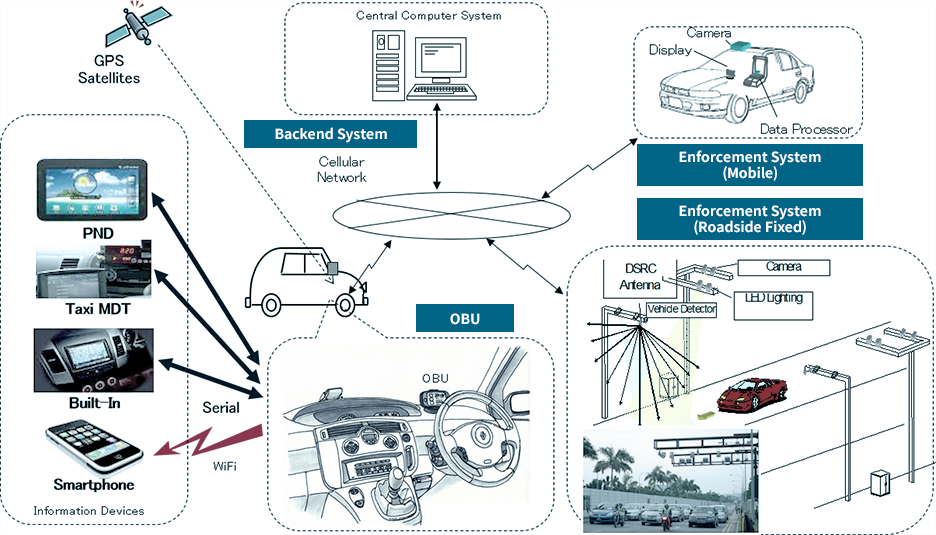
Realizing “a truly fair” fee collection system in Singapore and the rest of the world
The next-generation ERP will collect fair fees from all drivers. Fees collected based on distance and used for the maintenance and management of road infrastructure will satisfy the “benefit principle.”
“Area pricing = island-wide charging” will become a reality in Singapore in the not-so-distant future.

Congestion charges are now imposed on urban drivers even in Japan!
How does a “vehicle-axle-load-measurement device” solve the problem of an overloaded truck?

The weight of the vehicle is measured by the sensing device shown in the middle of the photo on the left.
Japanese cities that draw high numbers of domestic and overseas tourists, such as Kamakura and Kyoto, have adopted various measures over the years to ease the traffic congestion from visitors driving in by car. They are now considering road pricing systems.
The overloading of large trucks, meanwhile, causes not only traffic accidents, but also road damage due to excessive vehicle weights. Communities suffer as a result and bear higher costs for road maintenance and management. We are now developing an axle-load-measurement device that will instantly measure the weight of a traveling vehicle by sensor in order to identify overloaded vehicles. The deployment of the device will improve public safety and security.
PRODUCTS COVEREDE
Strategic Innovation
R&D
- Research System and Development Base
-
Strategic Innovation
- The world’s first! A Next-Generation ERP to Realize the Roads of Tomorrow in Singapore
- Meeting the needs of global logistics! The EVOL box making machine enables the high-speed mass production of corrugated board boxes.
- Keep a drink delicious and fresh! A carbon coating that evolves PET bottled beverages.
-
From the research and development sites
-
Development Story
- Next-Generation Multistory Parking Lot installed underground in the inner-city - Birth of the Mitsubishi Cell Park (Two-Lift Type) -
- From the site of MC development, a new corrugated board box making machine that is responsible for the production of corrugated boxes that supports our lives and economy
- Closing in on the latest research on a tire inspection machine that underpins the growth of a motorized society.
-
Innovators
- A magnitude 7 earthquake is faithfully reproduced in every detail! “Advanced hydraulic and control technologies” to shake full-scale medium-rise buildings.
- Rapid, beautiful, economical! A newspaper offset press developed to lead the world.
- Generate novel experiences in large-scale facilities that inspire and amaze people and awaken them to new possibilities. Frontline “Moving Technology.”
-
Development Story
- Mitsubishi Heavy Industries Technical Review


